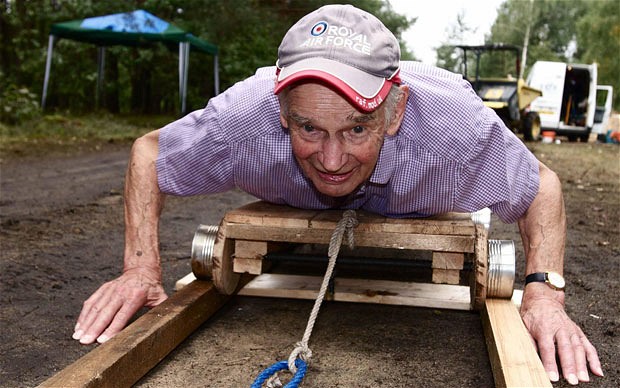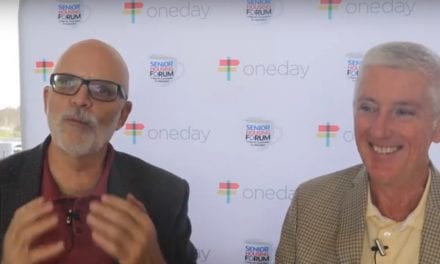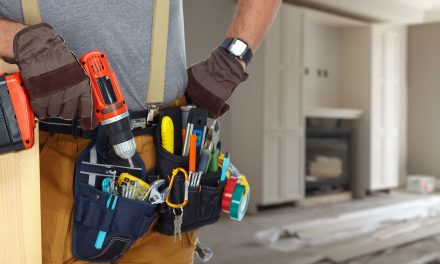These are topics that are so scary they rarely, if ever, actually get talked about at senior living conferences
I am just returning home from the Marcus Evans Long Term Care, Senior Living CXO summit in Southern California. During one of the presentations there was a short discussion about several business crushing risks that every senior living community faces. I am talking about those risks that could destroy a whole company or a community. At the very least could destroy the careers of a community leadership team.
These are topics that are so scary they rarely, if ever, actually get talked about at senior living conferences. The risks include:
- Medication diversion by staff
- Theft of resident or community assets
- Abuse of residents by staff members (or other residents)
- Elopement
- Abuse/manipulation of residents by family or friends.
I find myself thinking we need to spend more time talking about these risks in the context of how to minimize exposure and how to educate residents and families.
Elopement
Several years ago I was at a regional conference and there was a breakout session on elopement and I figured it would not be well attended, because I had never heard anyone talk about it or read articles about it. I was shocked to find the room packed and yet it is still the only time I have ever seen a session on this high risk problem.
I recently reached out to Troy Griffiths the CEO of Vigil Health Solutions, an expert in the senior living technology arena, to ask him about his thoughts on how technology can help reduce the elopement risk. (Note: Vigil Health Solutions is a Senior Housing Forum Partner)
Mitigating the Elopement Risk
Troy agrees that elopement is one of the scariest risks that senior living communities face. He made the point that it is a risk that can likely never be completely eliminated but can be significantly reduced using both high tech and low tech methods:
- An important underlying part of the equation has to be ensuring residents’ privacy and dignity.
- The most common high tech solution use doors that either alarm or lock when residents who are an elopement risk breech the safety zone. These systems are not new, but are getting better. There are two big problems: They are expensive and getting residents to wear and be comfortable with tags can be problematic.
The other problem with them is that they do not let you know you have a risk or a problem until the resident is just one door a way from being gone.
- Troy has a natural bias in favor of the Vigil Dementia system that uses a series of passive motion sensors that will allow the system to alert care givers when a resident leaves their room at night. This dramatically improves the likelihood the resident will be redirected before reaching the door.
- Simpler, less expensive and more common, are magnetic locking doors that will go into alarm if the door is opened. These doors can be tied to the emergency call system for the broadest possible response. Concerns with this more basic style locking system arise when doors are left propped open during move ins or maintenance and from residents tailgating behind authorized users without their knowledge.
- On the low tech side, new buildings can be designed to have secured courtyards with wandering paths that allow residents to safely and securely explore outdoor areas. Of course, this still requires gates with locks that may be susceptible to the same concerns as locked doors.
Futures
I also asked Troy about things like embedded chips and GPS bracelets and shoes. He noted that a number of years ago a company tried the embedded tag thing, but that most people felt it was just too invasive and they went back to tagging and tracking cows who didn’t seem to care.
While GPS holds great promise for the future it has for major limitations:
- It only works outdoors, which means it could be a godsend if someone does elope
- The devices are expensive
- They have terrible battery life. The shoes would need to be plugged in every night
- How do you make shoes people will want to wear?
Finally . . .
As an experiment I conducted the interview via Skype video chat. If you want to watch or listen to the whole thing you can find it below. The production values aren’t terrific, but there is greater detail. We are just beginning to play around with video and will be writing about the how and why in a future article. Below the video, I have included a slightly edited transcript of the conversation if that works better for you.
What are you doing to reduce the risk of elopement?
Steve Moran
Troy Griffiths on Elopment Video Transcript
Steve Moran:
My name is Steve Moran. I publish the website SENIOR HOUSING FORUM. Today I am talking Troy Griffiths, the CEO of Vigil Health Solutions about how technology can help protect residents and communities against the risk elopement.
It was a memory care residence or unit and she wandered outside at night and the next morning, a snow plow driver found her body, she passed away. And the truth of matter is that in senior living elopement is a big problem. We don’t like to talk about it very much. It’s scary, it’s dangerous.
Fortunately most of the time when elopement happens, the resident is found and brought back, but occasionally things like this story where this woman was found, who died from exposure, and they are really scary. They are tragic for the family, they are tragic for the senior living community, and they have really bad consequences for kind of everybody.
So I got to thinking about this whole process, about how senior living communities can better deal with this elopement issue and I reached out to Troy to just ask him as a technology expert in this senior living space what he thought or how he thought technology could help to deal with the elopement problems.
So, Troy I just would like to ask you the question on how can technology helps senior living communities do a better job with elopement.
Troy Griffiths:
Thanks Steve. Yeah, you know it is a great question and arguably one of the biggest problems faced in senior housing right now. for a long time it has been elopement in the special senior memory care dedicated units. So, technology has got a bunch of different ways that can be applied in both high tech and a few low tech ways that we can actually try to make a difference in keeping residents safe.
And importantly, I would like to add, hopefully give them the dignity, as much dignity and security as possible. So, some of the things that everyone’s familiar with are those systems that use a tagging or bracelet call system. Then when the residents get close to a door that is an exit or departure risk, there are either locked doors or an alarm. So those wander systems have been around for a while now and they have been improved over the years, but we’re all largely familiar with them. They are not inexpensive. But they do provide the sort of security that people want for the edges of the building.
Then there’s some certain needed additions, I mean a well one-bias which is a system of full solutions we sell called the Vigil Dementia System. There are passive sensors in a resident’s room and where they get outside of a safe behavior, a call goes out to the caregivers.
And specific to wandering if you have, or the residents have that system, you can be notified when they leave the room rather than waiting till they leave or get near leaving the building. So again you have a high elopement risk resident and you want to know especially at night when you have the lowest staffing component, you wanna know right then they have left the room. You may be can intervene in a way that is both safe but also dignified and can get them back to bed and get them back into residing where they belong.
So that’s just one way.
There are other ways, simple ways like, you know, connecting inter magnetic locking doors and so where you have those magnetic locking doors, if they go into alarm, you will get notified throughout a central system.
And then other ideas that again are sort of the low tech but still, you know, the design side of it. If you can really design a community and this is obviously not as true for the existing buildings but for new buildings where you’ve got wandering paths, you got capability to build an area that is safe for residents to move about, but doesn’t necessarily let them get in harms way. If you take a lot of those pieces and put them together you get a really powerful way to keep residents safe.
Steve Moran:
So do you have any thoughts about people who talk a little bit about these sort of a Big Brotherish . . . do you have any thoughts about doing things like embedding RFID under the skin in residents.
I mean is that something that people are doing or could have been done or do you see that in future or what are your thoughts?
Troy Griffiths:
Great question and it means that we can talk about it for a long time. In some ways its scary. There was a company several years ago that was investigating, researching, and have the capability to do it.
They since moved just to doing it to livestock, in cattle. The idea was not well received. You know people don’t like the idea of having chips implanted in them and being monitored. It really is that Big Brother thing.
To be honest I think the challenges with both the current generation and the next generation, we are not really gonna accept that. We want to be safe, We don’t want to be controlled or we feel like we’re in prison. So, I think that’s the fine line there.
On top of that it would not be inexpensive. While the chips or tags themselves are not necessarily that expensive having the infrastructure to monitor it wouldn’t be cheap. So, it’s not like it’s going to save a ton of money. It’s just going to be sort of this thing that is being viewed as being very invasive. So, may be in the future, may be your kids’ kids will be more accepting, but I don’t know.
Steve Moran:
So, what about GPS watches or shoes . . . just yesterday somebody called me up telling me they had been in a conversation with somebody who’s really pushing some sort of a new GPS watch. Again this particular application was more a home based application, but is that something that you see either today or coming in the senior living space.
Troy Griffiths:
It’s here today but I’ll tell you that its bleeding edge of technology, at least in implementation. I have noticed a few communities have tried it out. It’s only done on a very select basis and, probably the biggest challenges without question, is battery life. GPS only really works outside of buildings.
Steve Moran:
Okay.
Troy Griffiths:
So, it’s great once they’ve left or, if maybe, they have the ability to go for walks. But you want to know if they maybe drifted off, you want to go look for them, which again for a lot of the providers out there, that’s not going to be a fit.
And then, as I mentioned the really big one is that they will have to manage the battery life. We are monitoring this space closely. So, I do think there will be advancements that will make it much more practical. But today you have to plug those GPS running shoes in every day. So most of us don’t plug in our running shoes in every day. You’ll have to have somebody dedicated to remember to plug-in resident shoes and it’s a bit of challenge. And, they’re not inexpensive.








